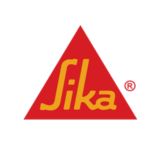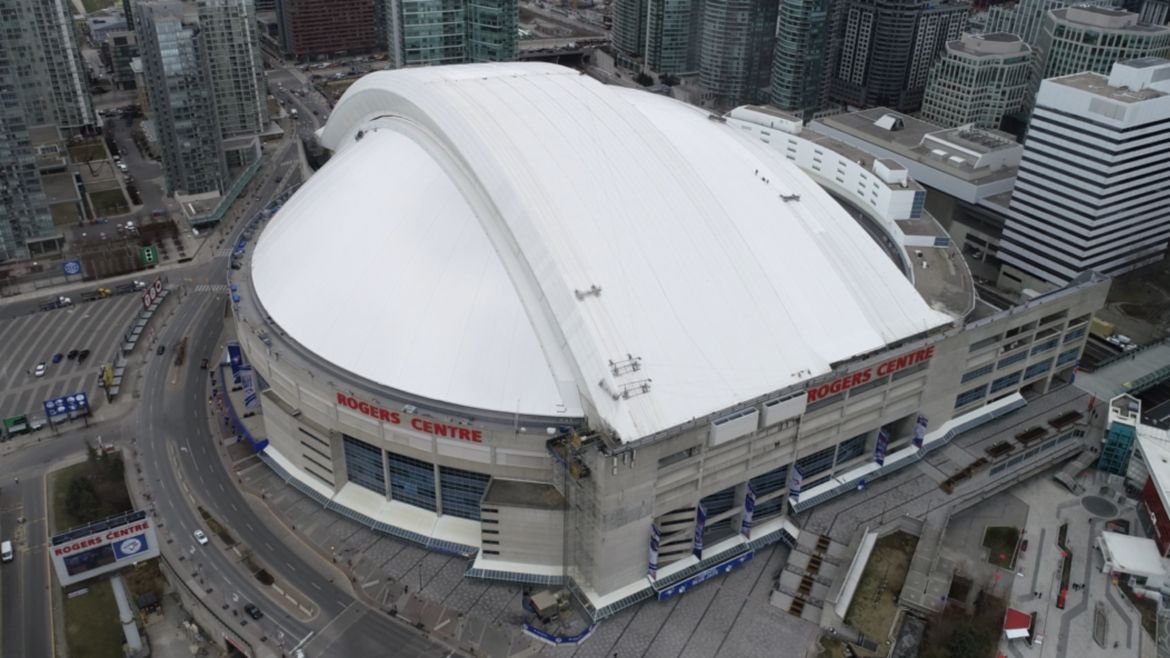CHOOSING THE RIGHT ROOFING SYSTEM
In roofing, your system plays an essential role in the protection of a building. Ultraviolet rays, ponding water, and high winds all conspire to compromise a roof prematurely, leading to leaking, damage to the building, costly repairs, and possibly an early tear-off and re-roof. Sika Sarnafil roofing responds to these challenges with a variety of PVC single-ply roofing system configurations designed to meet the specific needs of almost any application, regardless of slope.
To help you make an informed decision on which single-ply roofing system might be right for your project, below are brief descriptions of each system Sika Sarnafil offers as well as a link to our roofing membranes page and our FAQ section on the most frequent questions asked about PVC membrane. Click below to learn more.
ADHERED PVC ROOFING SYSTEMS
MECHANICALLY ATTACHED PVC ROOFING SYSTEMS
METAL RETROFIT PVC ROOF SYSTEMS
BALLASTED ROOFING PVC SYSTEMS
PROTECTED MEMBRANE SYSTEMS:
PVC is composed of two basic components: chlorine derived from common salt, and ethylene derived from natural gas. By taking these two components and adding other components, PVC can be made rigid, flexible or semi-flexible. This is why PVC is considered one of the most versatile plastic materials.
PVC is composed of two basic components: chlorine derived from common salt, and ethylene derived from natural gas. By taking these two components and adding other components, PVC can be made rigid, flexible or semi-flexible. This is why PVC is considered one of the most versatile plastic materials.
The terms PVC and Vinyl are often used interchangeably. PVC is short for Polyvinyl Chloride and Vinyl comes from the first word “Polyvinyl”.
PVC was discovered accidentally in the 1920s when a scientist was searching for a synthetic adhesive. Soon after the discovery, PVC was being used as shoe heels, shower curtains, wire insulation and waterproofing fabric for raincoats.
Around the ’50s and ’60s, methods for enhancing PVC’s durability opened the door to using PVC in other areas, such as the construction industry. In 1962, a small Swiss-based company named “Sarna” (known today as Sika Sarnafil) developed the first reinforced PVC membrane - “Sarnafil.” Sarnafil was used first as a temporary tent structure, and then shortly after to waterproof tunnels and roofs.PVC products quickly became the popular choice in the construction industry; the plastic’s resistance to corrosion, light, and chemicals made it ideal for building applications. PVC’s low cost, versatility, and performance make it the material of choice for industries such as healthcare, communications, aerospace, automotive, retail, textiles, and construction, where it is the most commonly used plastic. Rigid as a pipe or pliable as a sheet good, PVC is a true performer.
What type of roof system is PVC considered PVC is considered a “single-ply” roofing system. This is because the system only requires a single layer of membrane to keep the roof watertight. Other systems, such as an asphalt-based “built-up” roof system (BUR), involve multiple layers of asphalt-soaked felt to make up the system.
While PVC and TPO are both in the thermoplastic, single-ply roofing family, they are very different in their base chemical composition and physical properties. They are also not compatible with each other. PVC has been used as a roofing material since the 1960s and has over 50 years of proven performance
Both PVC and TPO can be mechanically attached (using plates and screws) or adhered to the roof substrate. Unlike PVC however, TPO membranes do not adhere readily, especially with water-based adhesives. They also have higher coefficients of expansion and contraction resulting in much greater movement through temperature cycles. Whereas adhered PVC roofs have performed exceptionally well over decades, the properties previously mentioned create challenges when adhering TPO.
PVC’s overlapping seams are “hot-air welded” together to prevent water from penetrating the building. Once welded together, the seams are one of the strongest parts of the system and do not break down over time like other roofing systems that use glues, double-sided tape or asphalt to bond their seams.
Aside from the different chemistries used to create the membranes, PVC and TPO have other important differences worth mentioning. TPO manufacturers are still continuing to modify their formulations to try and achieve the required level of performance, while PVC has been performing very well for over 50 years. PVC membrane’s resistance to fire performance is significantly greater than TPO membranes, as evidenced in the video below. Another important difference is TPO’s sheet flexibility. TPOs are much stiffer than PVC, making them harder for contractors to work with. This is especially important when having to flash penetrations or any other detail work, possibly leading to areas not being watertight, and when working in colder weather. For a complete list of the differences between TPO and PVC, click on the link to download the Sikaplan Versus TPO infographic below.
There are many reasons why building owners choose to trust a proven PVC roof membrane over a TPO membrane. One of the most important reasons is that most, if not all, TPO manufacturers are on their third or fourth formulation of the membrane, while PVC boasts 50+ years of real-world performance. For a roofing contractor, however, the reasons they prefer to install PVC over TPO have a lot to do with them being able to give you a water-tight system.
In general, PVC is a much easier membrane for the contractors to work with, even in cold temperatures. TPO membranes are stiffer, making sheet handling and detailing more difficult, especially in cold weather. If the membrane is challenging to work with and a contractor needs to flash penetrations or a wall/curb, it increases the risk of an improper application.
TPO also requires all cut edges of the membrane to be sealed from water migration, and seams are much more sensitive to probing. All of this leads to extra time, money and an increased potential for mistakes. When TPOs fail prematurely, contractors run the risk of tarnishing their reputation. No contractor wants to get a call that the roof they installed has failed. No matter what the reason, all parties involved usually take the blame.
Sarnafil “G” series membranes are a unique fiberglass-reinforced, single-ply membrane. Specifically designed for adhered and loose laid systems, they deliver exceptional dimensional stability and a low coefficient of thermal expansion and contraction to extend the service life of the roof.
Sarnafil “S” series membranes are polyester-reinforced and used in mechanically-attached roof systems to resist the high point loads imposed on the membrane.
Actual performance proven in the field over time is the only true test of a roofing system’s quality. Billions of square feet of Sarnafil membrane have performed with distinction over the past 50 years in climates of every description. Many installations are still performing after 30 years of service.
Selecting a roofing system should be a decision based on choosing the best long-term value. Sarnafil roofing and waterproofing systems are widely recognized for exemplifying the highest standards of quality, reliability and watertight protection — a claim that has been proven through the test of time.
Sarnafil S & G Membranes warranties include 5, 10, 15, 20, 25 & 30 Year (Membrane and Systems Warranties available). In addition, there is a high wind warranty coverage & hail warranties available.
Sikaplan Fastened & Adhered warranties include 5, 10, 15 & 20 Year (Membrane and Systems Warranties available)
Sarnafil "S" and "G" membrane widths: 5’, 6.5’, & 10’Sikaplan Fastened & Adhered membrane widths: 5’ & 10’
Sarnafil S & G Membranes: YesSikaplan Fastened & Adhered: No
Sarnafil S & G Membranes: EnergySmart Colors: Reflective Gray, Tan, Patina Green, and White; Evergreen, Copper Brown and Lead Grey.
Sikaplan Fastened & Adhered: EnergySmart White, Reflective Gray, and Tan
*All colors not available as standard stocked items in all configurations. Please contact us for more info.
Sarnafil S & G Membranes: Membrane will meet or exceed the thickness indicated on the package label.
Sikaplan Fastened & Adhered: Meets ASTM Standard
These standards for various single-ply membranes allow a manufacturer to produce a membrane 10 percent thinner (or thicker) than its labeled thickness, meaning that a membrane labeled 60 mils could actually be 54 mils and still be in compliance. Testing was conducted internally by Sika and the results indicate that virtually all manufacturers other than Sika produce membranes at or near the bottom of the 10 percent ASTM tolerance in thickness. Click here to see how you can truly "get what you pay for".
Sarnafil S & G Membranes: Adhered, Mechanically Attached, RhinoBond, Plaza Deck.
Sikaplan Fastened & Adhered: Mechanically Attached, Adhered & RhinoBond.
Sarnafil S & G Membranes: 104 (meets the requirements of Title 24, LEED & Green Globes)Sikaplan Fastened & Adhered: 104 (Fastened) / 107 (Adhered) (meets the requirements of Title 24, LEED & Green Globes)

